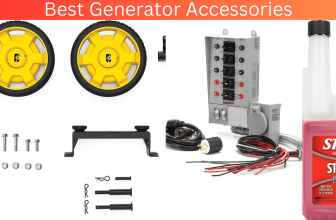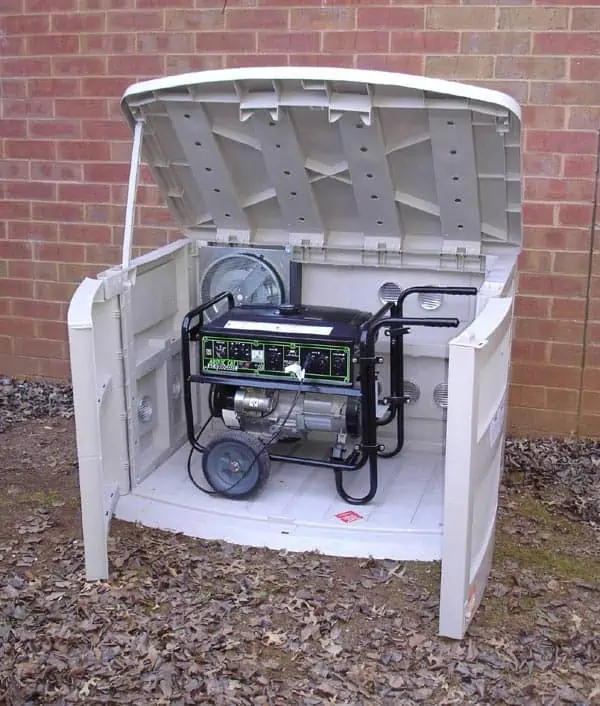
Based on the data from the Electrical Safety Foundation International (ESFI), 69% of the fatalities to have occurred involving generators occurred when a generator was placed in the living room or basement, and another 24% occurred when a generator was used inside an attached garage or shed.
Portable generators can provide a good source of power during an electrical outage. However, when improperly operated or installed, it can be deadly. Thus, generators should be placed in a safe and secure place. This is where this question comes in – “portable generator shelters build or buy?”
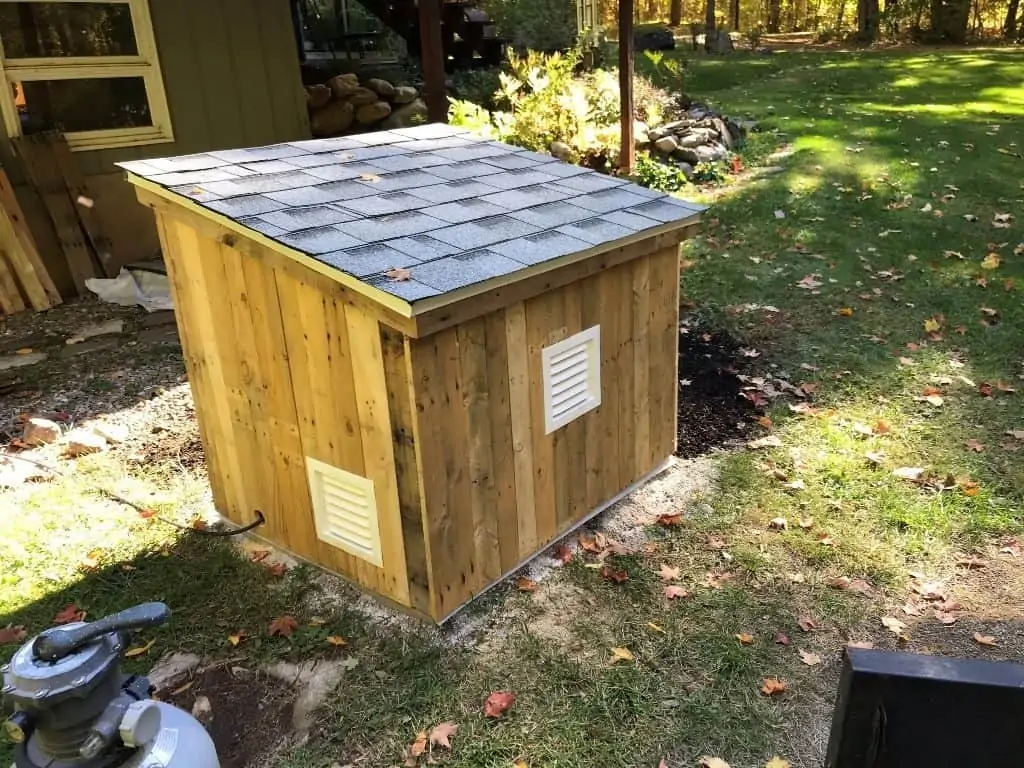
Are Portable Generator Shelters Expensive?
Ready-made portable generator shelters vary a lot in terms of price. They can be very expensive or very cheap, depending on the type and size. Roughly, the price is between $150 and $1,000.
Tent-style generator sheds range between $150 and $300, while the shed-style is more expensive, ranging from $300 to over $1,000.
If you want to do it yourself, the price also varies, depending on the materials that you will purchase.
Benefits of Portable Generator Shelter
Before you answer the question “portable generator shelters build or buy?”, it is important that you understand first the reasons why it is necessary to have a portable generator shed. Several reasons include the following:
- Weather protection – Generator enclosure or shelter protects the generation from weather conditions like rain, snow, and storm.
- Noise reduction – Generators create a lot of noise. If you put it in a safe enclosure, you can significantly reduce the amount of noise it produces.
- Security – The portable generator shelter will help secure the generator from theft.
- Storage – If you have a shed made for your generator only, you can free up some space in our garage or outdoor storage.
Portable Generator Shelters Build Or Buy: Things To Consider
Portable generator shelters build or buy – which is the better option for you? Here are the things you need to consider:
Ventilation
Ventilation is one of the most important things you need to pay attention to if you want to buy or build your own generator enclosure. Generators need ventilation to prevent overheating and to prevent the toxic fumes from being trapped.
For ventilation, you can try:
- Adding wooden floorboards with enough spacing
- Installing an exhaust fan
- Leaving the door of the shed open during operation
Noise
Generators produce too much noise. If you don’t have the quietest portable generator, then you need to factor in the noise level when making or buying a generator shed.
You can equip your generator shelter with some noise reduction materials, or you can make a soundproof baffle box.
Cost
Building an enclosure for your generator is almost always cheaper than buying one. It will require more time and effort, but it will let you save money. If you have the skills and the time, a DIY portable generator enclosure is not impossible to make.
Material
Whether you buy or build your own generator box, waterproof materials are always the best to protect your generator from extreme weather conditions.
Size
Make sure you know the dimensions of your portable generator. Don’t make the enclosure too small or too big. The generator enclosure should be slightly bigger, with plenty of room for airflow.
Location
The gas emissions from generators are toxic and hazardous. It is important that you place your shelter away from doors, windows, attached garages, tall grass, and other flammable materials.
Climate
Aside from the portable generator shelters build or buy concern, you should also consider the local climate. It plays a significant factor in choosing the right material for your generator shed.
- If you are near the ocean, you need a generator shelter that can withstand the corrosion caused by saltwater spray and humidity.
- For a cold climate, you need an extra heating unit to keep the components of your generator from freezing, especially during the winter when it is not in use.
- For a hot climate, maybe you need to install a cooling system just to keep the generator from getting too hot.
Security
It is not recommended that you put your generator inside your home or inside your garage. So, you have no choice but to put them outside. To keep the generator safe, you are going to need a locking enclosure.
A locking enclosure for your generator will not only keep your generator safe from thieves, but it will also keep kids safe and animals out. Generators are dangerous, so it is important to keep them in a safe place.
Distance
Generators are useful during emergencies, but at the same time, they are dangerous. Because of the noise and toxic waste, generators are recommended to be placed at least 20 feet away from doors and windows. Put generators away from flammable materials.
If you are camping, place the generator as far as possible. But make sure that you don’t disturb your neighbors.
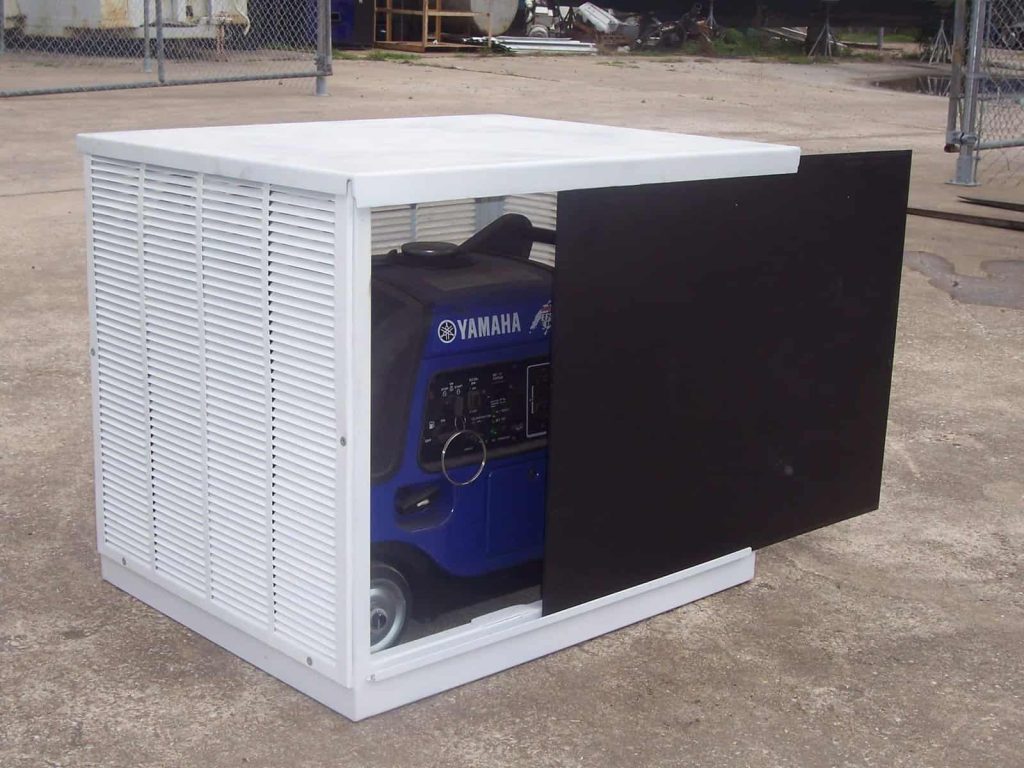
DIY Portable Generator Shelter
In relation to the concern about portable generator shelters, build or buy, the decision is up to you. However, if you are planning to build your own portable generator shelter, here are some options for you:
DIY Wooden Shed
This is a very common type of generator shed. You can find endless wooden generator shed tutorials online. This option is inexpensive, and it can be done quickly.
The downside of a wooden shed is it lets moisture and debris in. It is also not very durable and may not withstand extreme weather conditions.
Soundproof baffle box
The baffle box acts as a quiet box, but it can also serve a lot of purposes, like securing the generator from thieves and keeping it safe from damaging weather.
The soundproof baffle box will help maintain peace in your surrounding by trapping the noise. However, they are more difficult to make, and you will need high-quality noise-reduction materials to effectively reduce the noise.
Galvanized steel shed
As the name suggests, this generator shelter option is made from galvanized steel. Galvanized steel sheds are durable and secure. They offer protection against extreme weather and from animals.
The downside of using galvanized steel is it can trap heat easily. Thus, it requires added ventilation. Extra sealing is also recommended, as dirt and humidity may enter the shed through the imprecise joints.
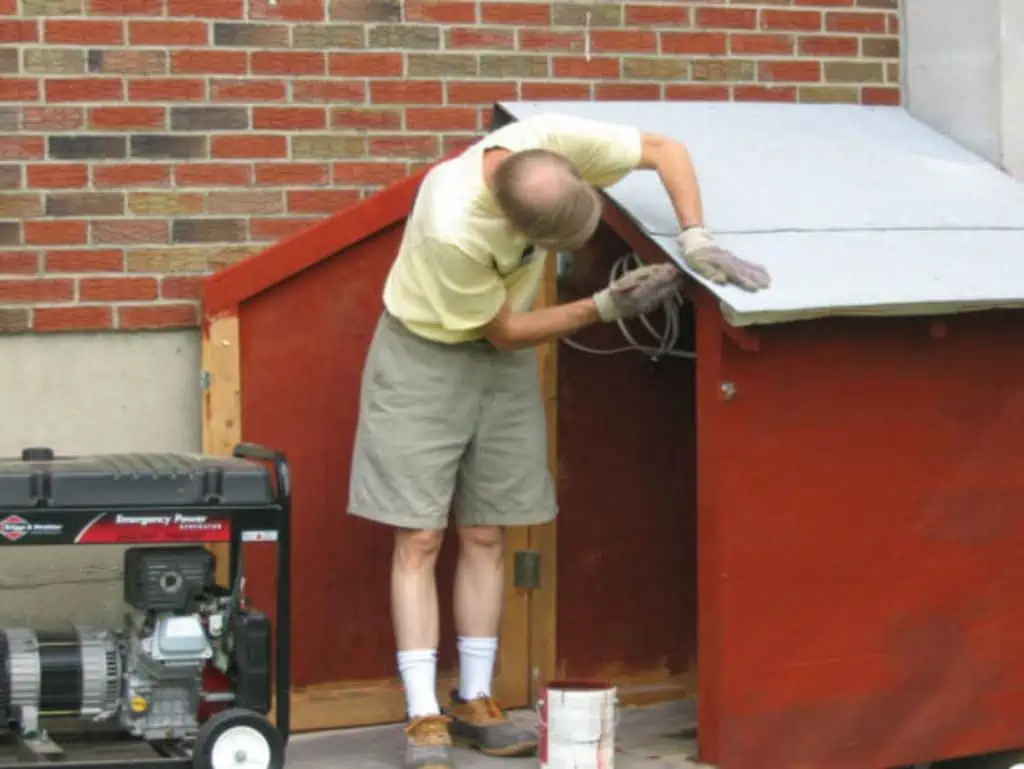
Concrete block shelter
Another option you have if you want to make your own generator shelter is the concrete block shed. It is securely made from concrete blocks. It gives soundproofing features, but you need to pay more attention to ventilation because it does not give too much ventilation like the wooden shelter.
Concrete block shelter reduces noise and keeps dirt away. It is also not so expensive to make if you opt for a DIY portable generator shelter.
One of the disadvantages of using concrete blocks is that they offer little thermal resistance.
What You Will Need For A DIY Shed
Some of the items you will need to make your own generator shelter are the following:
- Plywood sheets
- 2×4 lumber
- Aluminum sheets
- Railing bards
- L-Brackets
- Deck screws
- Machine screws
- Roofing shingles
- Measure tent
- Table/Circular saw
- Wood filler
- Wood glue
Note: All lumber and plywood should be flat and straight, free of knots, damages, or decay.
For a DIY portable generator shelter, it is best to see some tutorials first and determine what materials you are going to purchase.
Conclusion
For the issue of the portable generators, shelters build or buy; the decision is yours. Buying and building your own generator shed has its own advantages and disadvantages. It really depends on what your priorities are. Would you prefer to build it yourself and save some money? Or would you prefer to purchase the ready-made tents and save time and effort? The decision is yours to make. Whether you are buying or building your own, what is important is you keep the portable generator in a safe and secure place.



